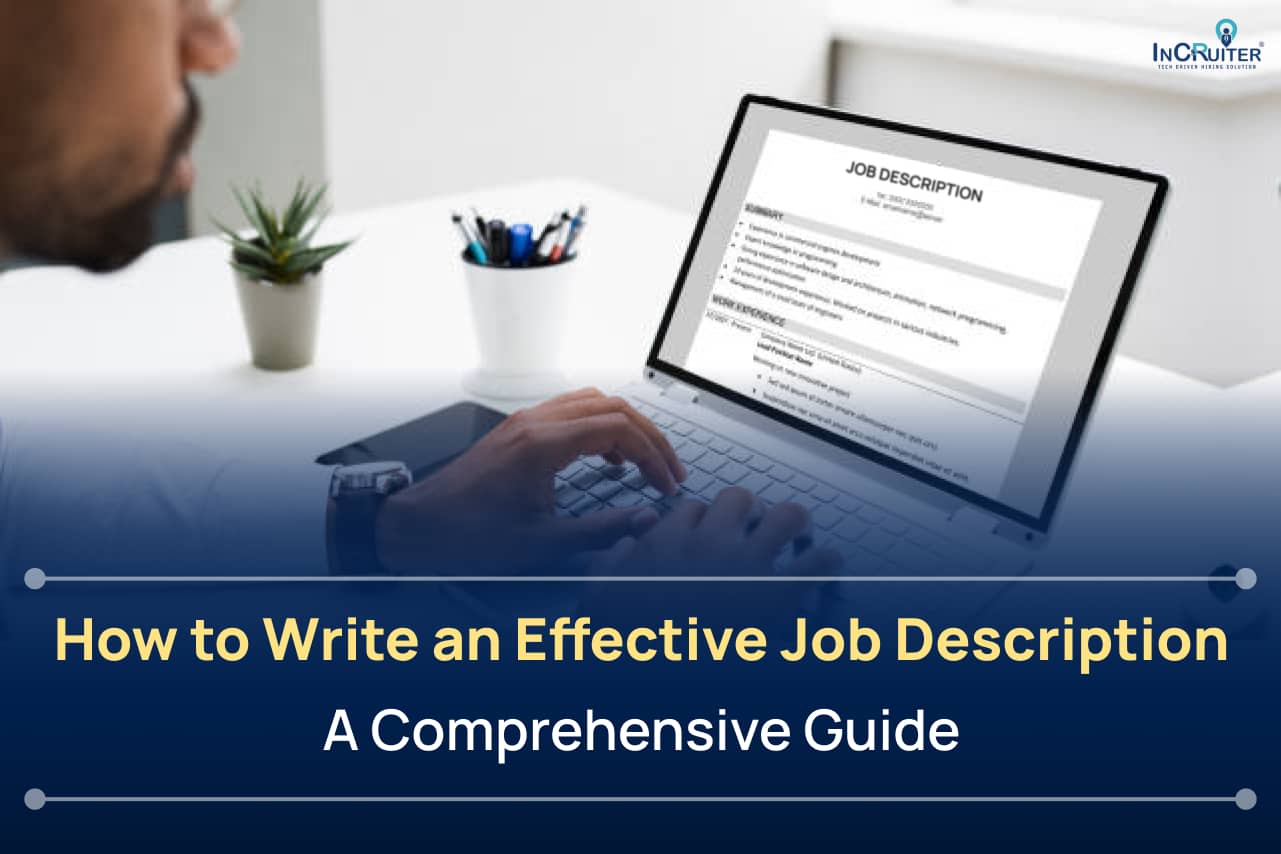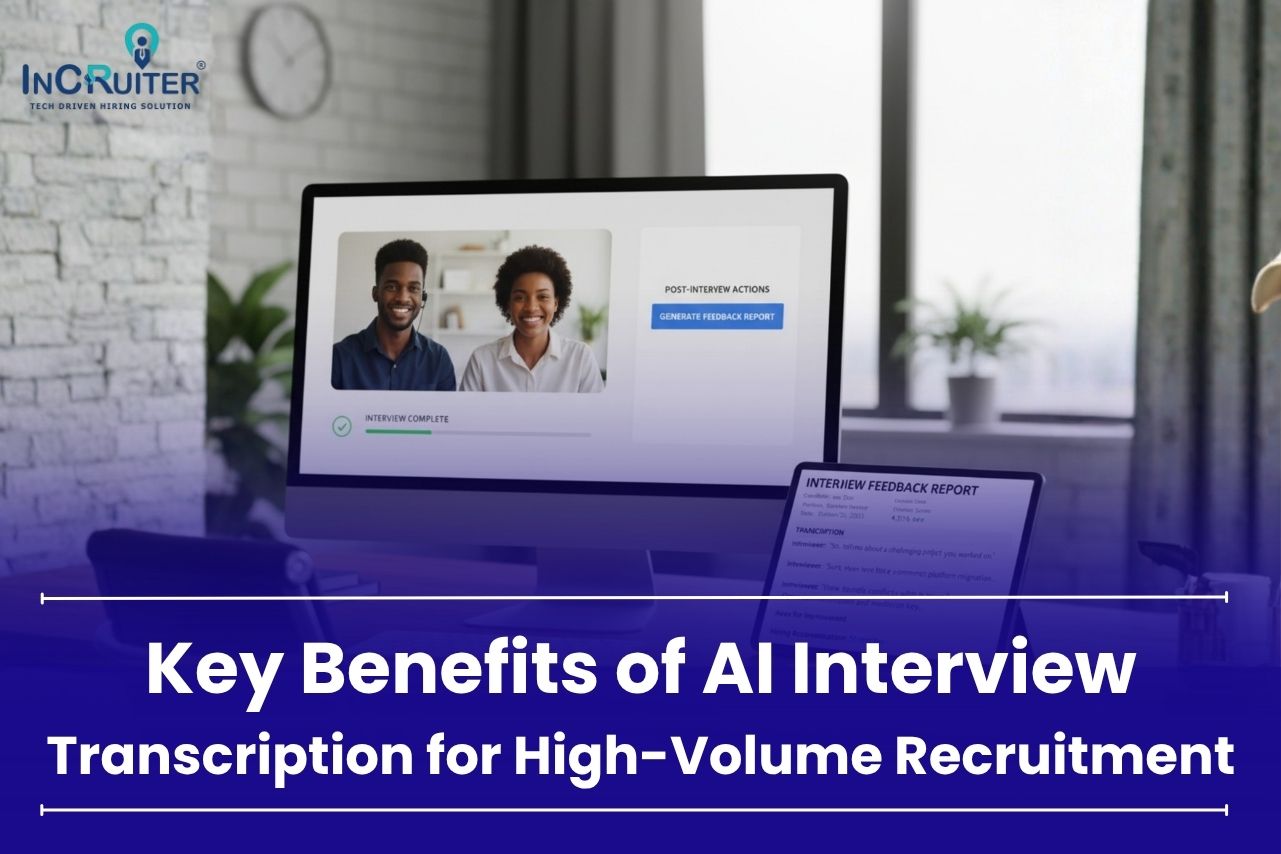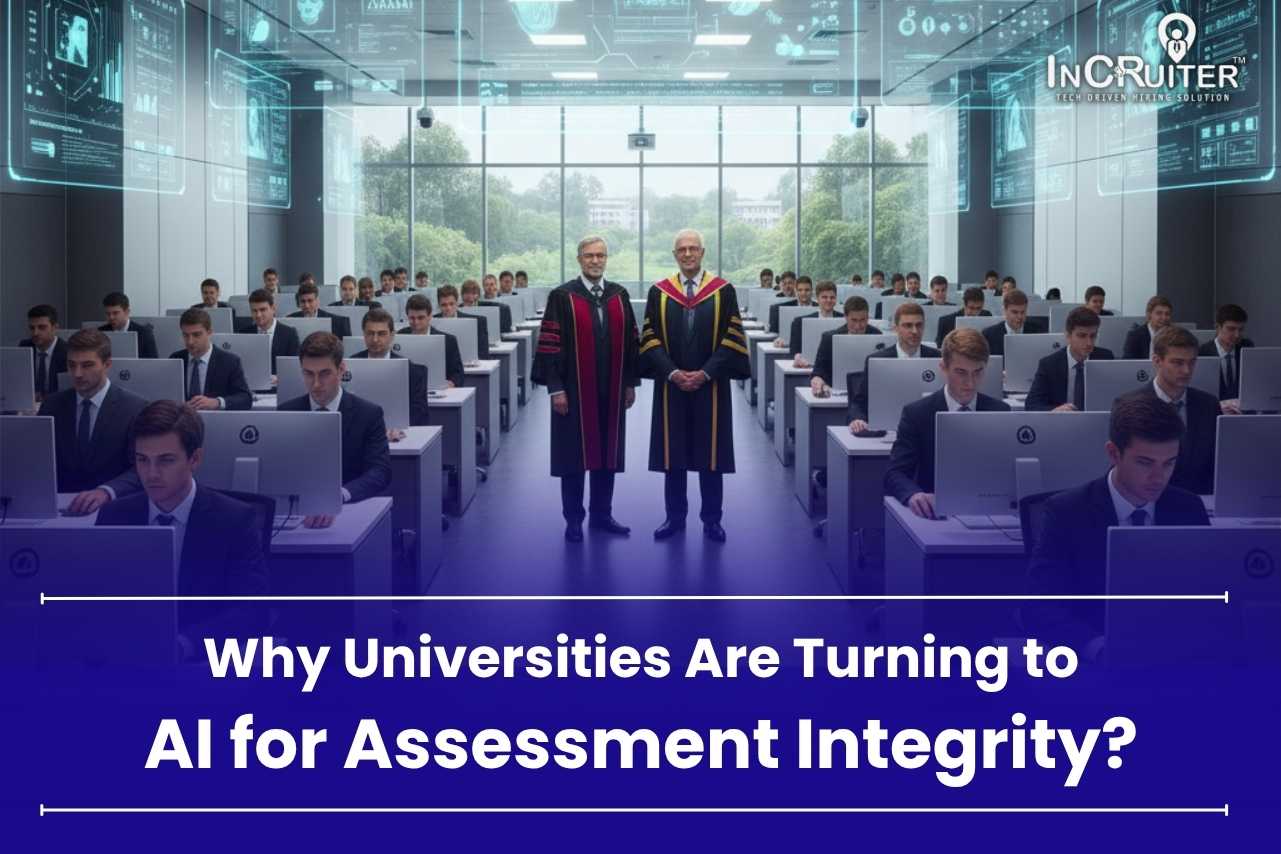A job description is like a role’s personal intro. It seems straightforward, doesn’t it? Yet, it plays a bigger part than we often give it credit for shaping recruitment efforts and keeping employees around longer. A sharp, well-written job description isn’t just a document. It’s your first hello to potential hires. Think of it as a plan that explains duties, clarifies expectations, and sets the tone for success.
Here’s a striking fact, 36% of candidates think job descriptions are too vague, which makes them unsure about applying. Losing great talent because of unclear wording is a risk no company should take.
A good job description works wonders for everyone. For candidates, it’s a clear view of their responsibilities and a sneak peek into the workplace vibe. For employers, it’s a tool to align expectations, make hiring smoother, and even guide performance reviews later. What makes it shine? Careful thought and thorough research into the role.
This guide is here to help you craft job descriptions that grab attention, work perfectly, and always deliver. Let’s get started!
What is a Job Description?
A job description is a written document that outlines the responsibilities, skills, and qualifications required for a particular role. It’s not just some enumeration of tasks but a way to give a glimpse at what it’s all about. It specifies the responsibilities, needed qualifications, and skills while providing a glimpse of how the position will fit into larger organizational goals. Simply put, it is your go-to map to navigate hiring and performance.
The content of a job description involves everything candidates and employers need to know: daily duties, qualifications, reporting structure; you name it! It’s the framework that keeps the hiring process tight, onboarding smooth, and expectations crystal clear.
But here’s the kicker, it’s not just about how to prepare job descriptions for recruitment. Job descriptions are multitaskers! They’re essential for performance reviews, career development plans, and even maintaining compliance. So, if you’re skimping on this part, you’re leaving potential (and efficiency) on the table.
Advantages of a Well-Written Job Description
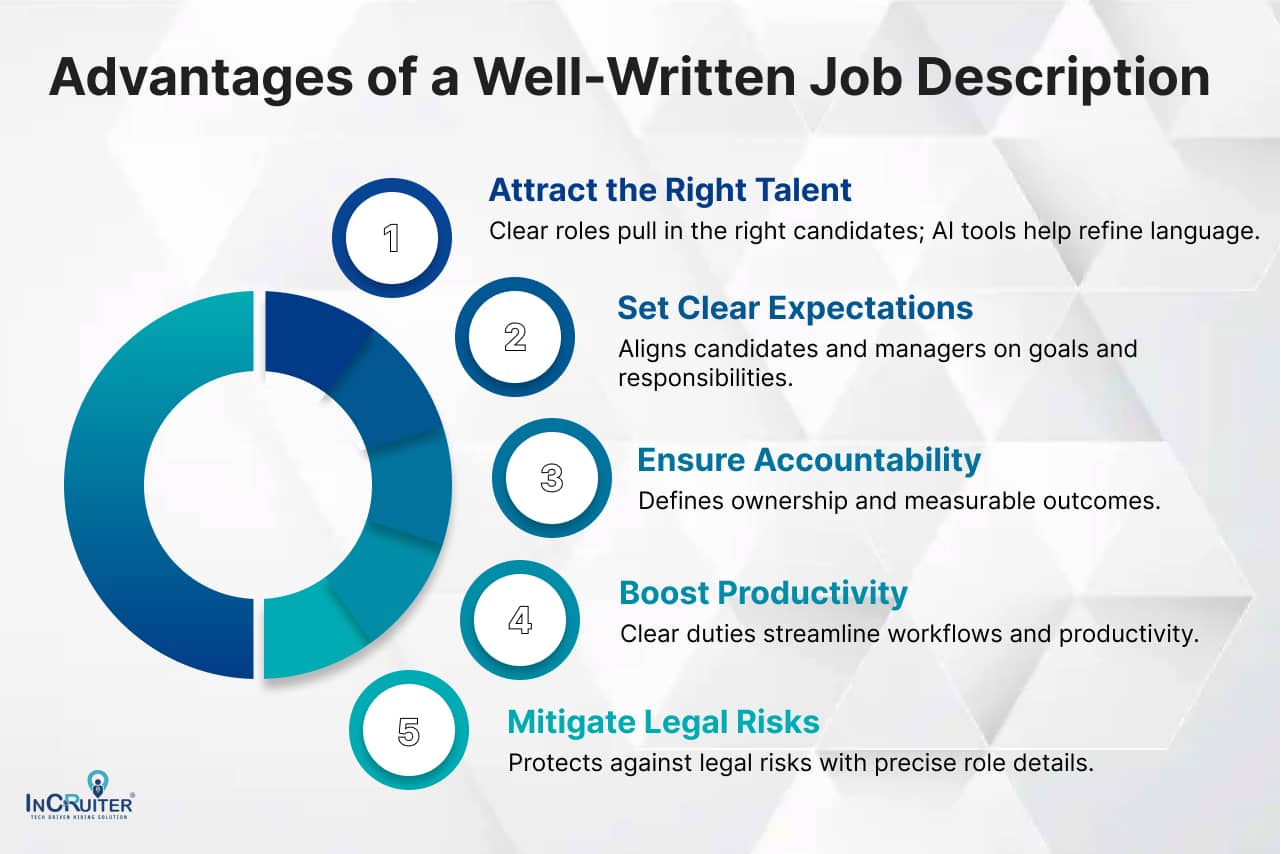
Why put effort into crafting a job description? Because the advantages of job descriptions are endless! Here’s why they matter:
Bring in the Right People
Ever get spammed with resumes that make you go, “Why did they even apply?” That’s what a vague or generic job description does. A great one? It pulls in candidates who truly get the role. By nailing what to write in a job description, like crystal-clear responsibilities and must-have qualifications, you’re filtering out the noise and focusing on talent that fits.
Pro tip: Using tools like job description AI can help you refine the language, making it more inclusive and clear without spending hours editing. The result? A polished job description that speaks to the right candidates
Set Expectations from Day One
Nobody likes walking into a new job blind. A good job description is like a cheat sheet that everyone can use; candidates know what they are signing up for and managers know what to expect, win-win.
When figuring out how to prepare a job description, lay out the everyday and long-term effects of the role. No fluff here; get real on the main responsibilities and outcomes. When everyone is reading off the same page, there’s less room for ambiguity and more room for growth.
Keep Everyone Accountable
We’ve all heard the “That’s not my job!” excuse, right? A detailed job description shuts that down. It’s like having a contract that says, “This is what you own, and here’s how it contributes to the bigger picture.” Accountability becomes part of the culture.
When you’re working on the process of job description, include measurable goals and outcomes. These benchmarks help both employees and managers track performance and stay aligned. It’s all about ownership and clarity.
Supercharge Productivity
When people know exactly what they’re supposed to do, guess what happens? They get stuff done faster and better. A well-crafted job description cuts out the second-guessing and frees up mental space for actual work.
Features of a job description, such as outlining one’s responsibilities, required skills, and reporting structure, keep the workflow smooth. It’s not the work of a single hand. This needs collaborative collaboration of team members.
Play It Safe (and Smart)
A job description isn’t just a piece of paper. It’s your safety net. Think of it as the blueprint that keeps everything in order. When you clearly lay out the key duties, physical demands, and required qualifications, you’re not just making life easier for your team. You’re also following labor laws and reducing the chances of legal trouble, like discrimination claims.
The secret lies in understanding the difference between job analysis and job description. Job analysis digs deep, uncovering all the details about a role. Meanwhile, the job description takes those findings and puts them into a clear, structured format. Together, they help your HR team stay organized, efficient, and on the right side of the law.
Key Features of a Good Job Description
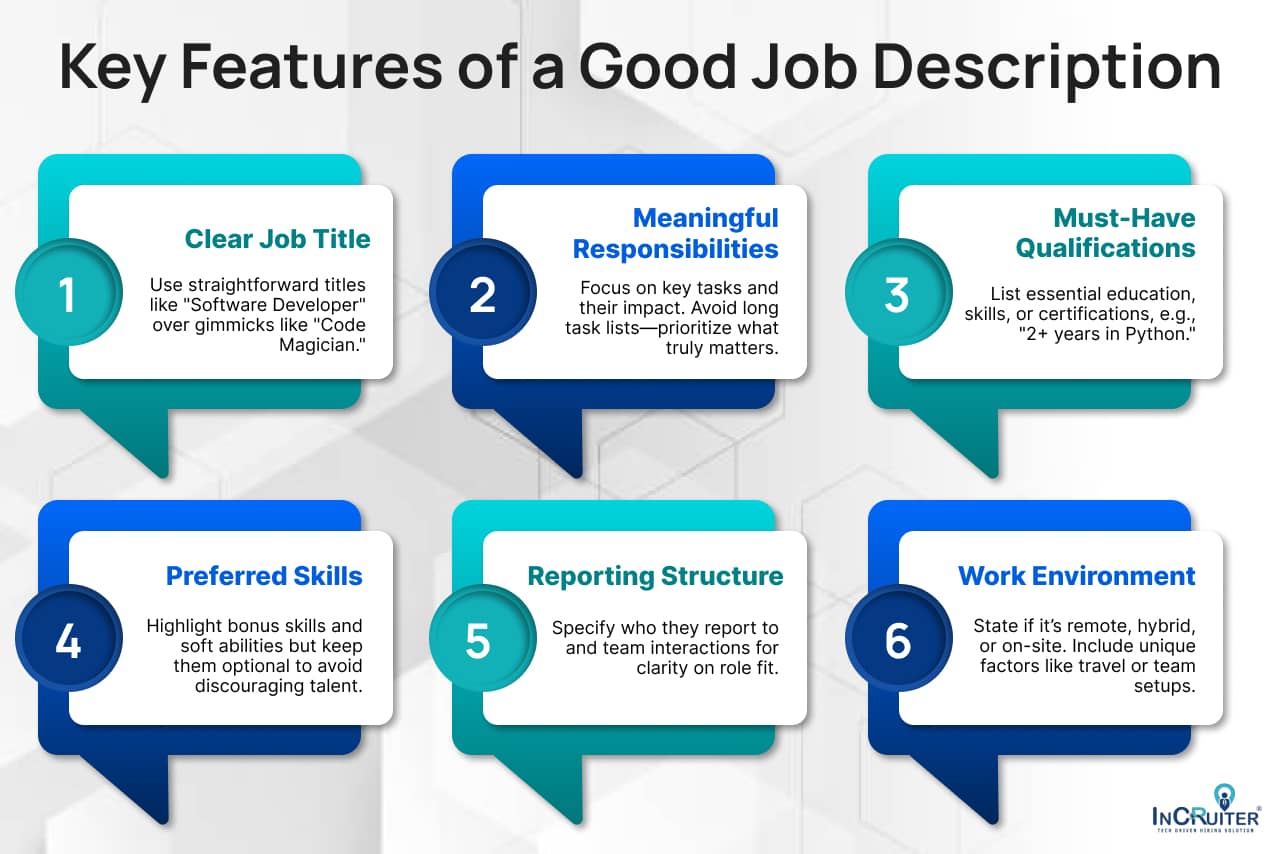
The job description is not about throwing together a few buzzwords but getting details just right. The features of a job description can make or break how effective it is. Let’s dive into the key ingredients to make your job description work like a charm:
A Job Title That Speaks the Truth
Skip the fluff. No one’s searching for roles like “Marketing Wizard” or “Sales Ninja.” Use a job title that’s clear, straightforward, and reflects the actual position.
Example: Instead of “Code Magician,” go with “Software Developer.” It’s simple, searchable, and gets straight to the point.
Responsibilities That Actually Mean Something
This section is typically the most important part of your job description. It’s the one where you describe key responsibilities in a way that makes clear to applicants how their work will affect the greater good. Instead of just listing tasks, demonstrate what they will lead to and to what extent their efforts will be additive to higher-level goals.
A helpful tip is to focus on the key duties and give a simple reason behind each one. People appreciate knowing how their role fits into the bigger picture and why their work will be meaningful!
Must-Have Qualifications
Here’s where you outline the non-negotiables. Educational requirements, certifications, and technical skills belong here. Keep it simple and focused on what’s truly needed for success in the role.
Example: “Bachelor’s degree in Marketing” or “2+ years of experience with Python programming.”
Preferred Skills That Sweeten the Deal
Sure, you’ve got the essentials covered, but what about the extras? Highlight soft skills like communication or leadership, and mention any bonus technical skills that would make a candidate shine.
Reminder: Keep the “nice-to-haves” optional. Don’t scare off potential talent by making these seem mandatory.
The Reporting Structure
Who will they work with? Who will they report to? Candidates want to know where they fit into the org chart. Be clear about whether the role involves supervising others or reporting to a specific manager.
Why It Matters: A transparent reporting structure gives candidates a sense of their daily interactions and potential career path.
A Peek Into the Work Environment
Is it fully remote, on-site, or a hybrid setup? Let them know upfront. This section is critical for managing expectations, especially in today’s flexible work culture.
Pro Tip: If there’s anything unique about your work environment (like travel requirements or team setups), be sure to include it.
Step-by-Step Process to Write an Effective Job Description
Crafting a job description that pulls in the best talent and lays out clear expectations doesn’t need to feel overwhelming. A clear, easy-to-follow step-by-step process can result in an effective job description that is professional in style. Let’s take it step by step:
Let’s break it down for you:
Step 1: Dig Deep with Job Analysis
Before diving into writing, it’s crucial to fully understand what the job is about. Think of this as building a strong base for your job description. If this step isn’t solid, the rest might fall apart. This is your research phase, and skipping it can lead to big gaps in the process.
Here’s how you can analyze a job effectively:
- Talk to team members: Chat with current employees to learn about their daily tasks, struggles, and the parts of their work they find rewarding. Their experiences give valuable insight.
- Collaborate with managers: Managers can offer clarity about the role’s purpose and their expectations for the position. Their input helps shape a more realistic description.
- Observe the workflow: Attend meetings, review ongoing tasks, or even shadow employees to see how the role works in real-time.
- Explore industry data: Look into benchmarks, commonly used tools, and salary trends in the market. Aligning with current standards ensures your job description stays relevant and appealing.
Step 2: Give Your Job Title the Spotlight It Deserves
Think of the job title as the nameplate on your office door it’s the first thing people notice, and it speaks volumes about what’s inside. Get it right, and candidates will line up to learn more. Get it wrong, and they’ll scroll faster than you can say “Happiness Ninja.” (Yep, that’s a real title someone tried.)
A good job title isn’t just there to sound cool it’s your first chance to set the tone, show professionalism, and make sure the right people are knocking at your door.
Job Title From Quirky or Professional
| Overly Quirky Title | Clear and Professional Title |
| Happiness Warrior | Customer Success Manager |
| Social Media Wizard | Social Media Specialist |
| Lead People Person | HR Generalist |
| Money Guru | Financial Analyst |
| Idea Wrangler | Product Manager |
Step 3: Define Responsibilities That Resonate and Deliver Impact
The most important part of a job description is the Responsibilities and Outcomes section. This section does not look like a list of duties. Instead, it illustrates a bigger picture. It explains the purpose of the role and how it helps to support the goals of the business. People applying for jobs don’t just want to know what tasks they’ll handle. They also want to understand why their work matters and how they can make an impact. Let’s talk about how to make this section shine and leave a strong impression.
Examples of Well-Written Responsibilities
Let’s turn generic job duties into high-impact responsibilities:
- Generic: Manage social media accounts.
Improved: Create and manage content across social media platforms to increase engagement by 15% within six months.
- Generic: Collaborate with cross-functional teams.
Improved: Led cross-functional collaboration with design, sales, and product teams to deliver new product launches within set timelines.
- Generic: Prepare financial reports.
Improved: Analyze and prepare monthly financial reports, providing actionable insights to improve departmental budgeting.
For example,
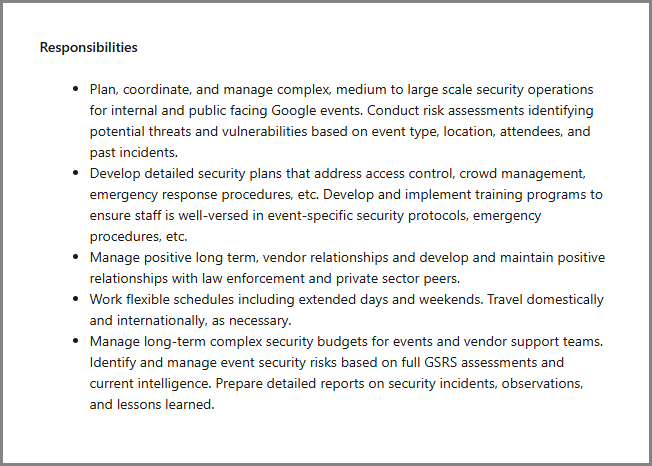
Step 4: Define the Work Environment and Logistics
Nobody likes playing guessing games about where and how they’ll work. The work environment isn’t just a detail. It’s an important part of what they think about before hitting the “Apply” button. Lay it all out there so they know what they’re signing on for.
Here’s how to do it like a pro:
- Remote, Onsite, or Hybrid: Be upfront about the location. If it’s hybrid, explain how often they need to be in the office.
- Travel Requirements: Got them hopping flights or zipping around locally? Let them know the percentage and type of travel involved.
- Work Hours: Is it a strict 9-to-5 or flexible hours? Include expected shifts or overtime if applicable.
Step 5: Align the Role with Company Goals
Ever wonder why some job descriptions feel flat? It’s because they miss the mark on showing why the role matters. Candidates don’t just want to know what they’ll do they want to know why it matters and how it fits. This is your chance to connect the dots and make the role feel meaningful.
Here’s how to make it click:
- Clarify the role’s purpose: Explain how their work contributes to company goals, like boosting market share, enhancing customer experience, or driving innovation.
- Link tasks to outcomes: Go beyond duties and share the impact, like “You’ll develop strategies that grow customer retention by 20% annually.”
- Highlight teamwork: Show how they’ll collaborate with other teams to achieve shared success.
- Inspire ownership: Use language that makes the candidate feel like a crucial part of the mission: “Your contributions will directly shape our success.”
Step 6: Final Touches and Review
Did you know that poorly written or unclear job descriptions cost companies valuable time and resources? Studies show that over 30% of hiring managers admit they’ve made wrong hires because the job description wasn’t precise enough. Don’t let your hard work fall flat this final step is your safety net to ensure your job description hits the bullseye.
Let’s make sure your efforts pay off by refining every detail. Think of it as the dress rehearsal before the big show. Here’s how to perfect it:
- Seek feedback: Share the draft with HR, team leads, or anyone who can offer insights. A fresh perspective helps spot gaps you might miss.
- Simplify and clarify: Break down any jargon or overly technical terms. The description should be as approachable as it is informative.
- Focus on inclusivity: Run it through an AI-powered job description tool to weed out unintentional bias and ensure accessibility.
- Align with company culture: Does the tone match your organization’s values and voice? If not, tweak until it does.
- Final checklist: Are all essential responsibilities, qualifications, and expectations clear? If so, you’re good to go publish confidently!
Job Description vs. Job Specification
A job description focuses on the tasks and duties tied to a specific role. It outlines what the job involves, the responsibilities that come with it, and why the role exists. Think of it as the section in a job listing that explains “what you’ll do.”
For example.
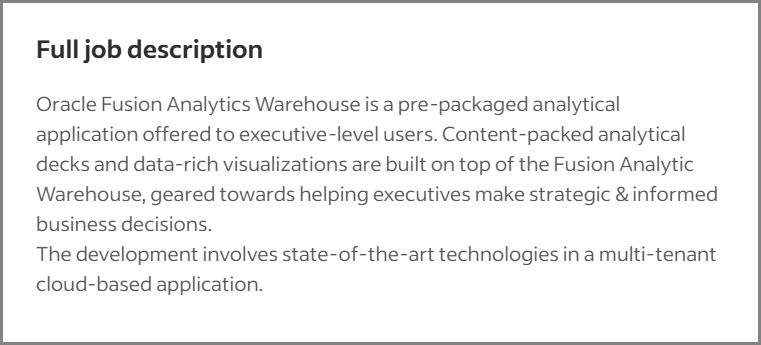
On the flip side, a job specification zooms in on the person who will fill the role. It highlights the qualifications, skills, and experience needed to succeed in the position. This is the part that says “what you’ll bring.”
For example,

For example, the difference between job description and job specification in HRM, a job description might mention tasks like managing recruitment or creating company policies. Meanwhile, the job specification would require a degree in HR or relevant work experience. Both focus on the same job but from completely different perspectives.
Job Analysis vs. Job Description
Job analysis is the groundwork; it’s all about digging deep to uncover what a job actually involves. It looks at tasks, responsibilities, required skills, and even working conditions. Think of it as the blueprint before building anything solid. Meanwhile, a job description is the shiny result of all that hard work.
It lists out what the role demands and sets clear expectations for candidates. The difference between job analysis and job description boils down to this: analysis gathers the details; description organizes them into a clear, actionable document. Together, they’re like the perfect tag team for smart hiring!
Tools and AI Solutions for Writing Job Descriptions
Writing job descriptions can feel like running in circles. Balancing clarity, inclusivity, and precision while staying aligned with company goals? It’s a lot. That’s why job description AI tools are becoming a recruiter’s best friend.
These tools don’t just save time they refine your job descriptions to perfection. From optimizing language for inclusivity to aligning with industry trends and even helping job description and resume match, AI takes the guesswork out of JD creation. It’s about working smarter, not harder.
And here’s where InCruiter AI JD Generator comes in. Designed to deliver tailored, bias-free, and impactful job descriptions, it’s the shortcut to crafting JDs that attract top talent while reflecting your company’s ethos. Less hassle, more results. Ready to level up?
Top 10 Mistakes to Avoid in Your Job Descriptions
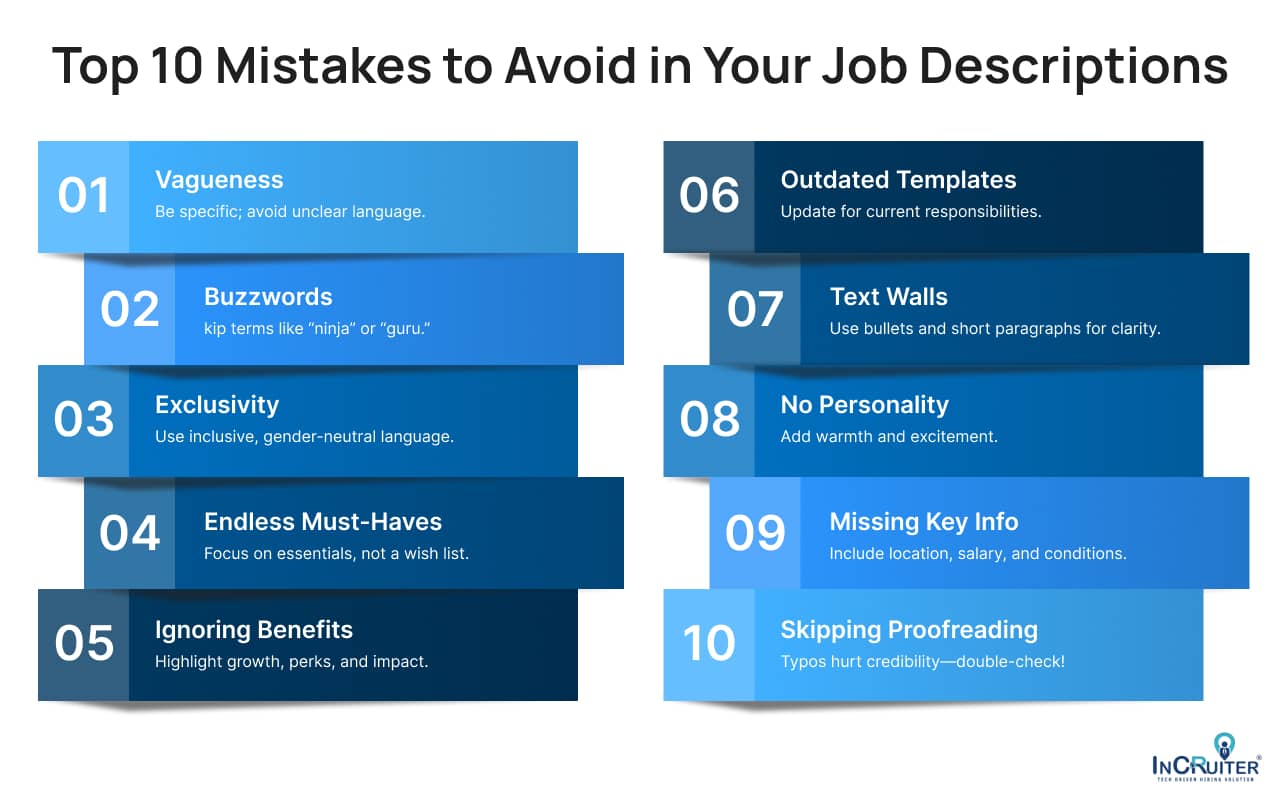
Crafting job descriptions is like setting the foundation for a house you get it wrong, and everything else crumbles. The goal is to communicate expectations clearly, attract the right talent, and set the stage for success. But many job descriptions fall short because of avoidable mistakes. Here’s a quick guide to help you steer clear of the most common pitfalls.
- Being Vague: If your job description reads like a fortune cookie, rewrite it. Candidates need specifics, not riddles.
- Overloading with Buzzwords: “Ninja,” “rockstar,” or “guru” might sound cool, but they’ll confuse and alienate serious candidates.
- Ignoring Inclusivity: Language matters. Keep it gender-neutral and avoid terms that exclude anyone (e.g., “young and energetic”).
- Listing Endless Must-Haves: Do you really need every skill on earth? Focus on what’s essential and keep the rest as “nice-to-haves.”
- Skimping on Candidate Benefits: Candidates care about how the role helps them grow. Talk about perks, growth, and impact—not just what you need.
- Using Outdated Templates: If the role has evolved, so should the description. Update it to reflect current responsibilities.
- Writing Walls of Text: Nobody has time to dig through a block of text. Use bullet points and short paragraphs to make it readable.
- Forgetting Personality: Don’t sound like a robot. Add a touch of warmth and excitement to make the role appealing.
- Leaving out Key Information: Role specifics like location, salary range, and working conditions matter. Don’t keep candidates guessing.
- Skipping Proofreading: Typos and errors scream unprofessional. Always fix common grammatical mistakes before publishing.
Conclusion
A well-written job description is your golden ticket to attracting the right talent, setting clear expectations, and building a thriving workplace. By focusing on clarity, inclusivity, and alignment with company goals, you create a document that works for everyone: candidates, recruiters, and managers alike. Keep evolving your job descriptions to stay competitive in today’s dynamic talent market.






